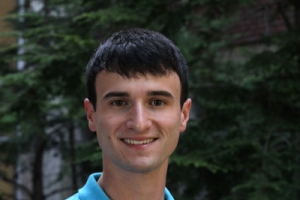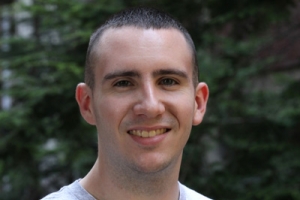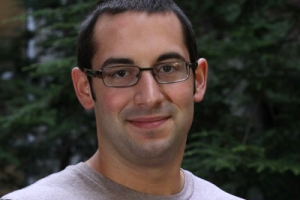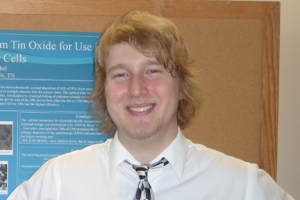REU Past Students
2023 2022 2021 2019 2018 2017 2016 2015 2014 2013 2012 2011
2012
-
Keisha Carr - Chemical Engineering, University of Maryland
 LinkedIn
LinkedIn
Educational Institution: University of Maryland, Baltimore County
List of Mentors: Dr. David Piston and Dr. Tara Schwetz
Program: NSF REU
Research Project: α-cell Response to Low Glucose
Poster: NSF REU Keisha Carr Poster.pdf
Research Abstract:
Pancreatic α-cells play an important role in regulating glucose homeostasis by secreting glucagon during hypoglycemia. To date, it has been poorly understood how intact α-cells respond to very low levels of glucose (less than 1mM). To elucidate α-cell behavior within the islet, mouse islets were loaded with Fluo4-AM, a calcium (Ca2+) indicator dye, to detect changes in intracellular Ca2+. The islets were exposed to glucose concentrations between 0.1 and 5 mM and the changes in α-cell parameters were determined by confocal microscopy. Further, two-photon excitation microscopy was used to measure the combined autofluorescence of NADH and NADPH (NAD(P)H, collectively), which serves as a cellular redox state indicator and provides information on the cell's metabolic activity. NAD(P)H autofluorescence was measured as a function of glucose (between 0.1 and 5 mM). As glucose concentration increases, both Ca2+and NAD(P)H activity also increase. However, there is minimal activity at 0.1 mM glucose in the α-cells. These data show that intact α-cells exhibit a reponse to glucose even at very low concentrations. Thus, it is postulated that α-cell activity as a function of glucose may be left-ward shifted compared to the β-cell, which is active at higher glucose levels. -
William Crosby - Chemistry, University of Tennessee - Martin
 Educational Institution: University of Tennessee, Martin
Educational Institution: University of Tennessee, Martin
List of Mentors: Dr. David Cliffel and Gabriel LeBlanc
Program: NSF TN-SCORE
Research Project: Photoreduction of Graphene Oxide with Photosystem I
Poster: NSF REU Will Crosby Poster.pdf
Research Abstract:
Photosystem I (PSI) is a protein in green plants that carries out the processes of photosynthesis. Graphene has shown potential and popularity in electronics research due to its high conductivity and optical transparency. Graphene can be produced through the oxidation of graphite, producing graphene oxide (GO) followed by thermochemical reduction to reduced graphene oxide (rGO). Here we aimed to combine PSI and rGO in order to produce an efficient, photoactive electrode with many applications. We prepared the biohybrid composite by photoreducing GO to rGO using PSI as a photoactive reducing agent. This alternative reduction method lowers the risk of denaturing PSI, which is likely with the high heat and harsh chemicals used in traditional reduction methods of GO. The resulting biohybrid composite demonstrated decreased solubility in water after exposure to light, which we attributed to the partial reduction of the GO. This insolubility greatly benefits the composite deposition on electrodes for use in aqueous experiments as it promotes good contact with the electrode surface and thus faster electron transfer. The new PSI-rGO composite material was characterized using UV-Vis spectrophotometry, Raman spectroscopy, and various electrochemical techniques. It has been shown that PSI-rGO biohybrid composites can be prepared and deposited on many electrode materials while still maintaining photoactivity.- Co-author Journal Publication
G. LeBlanc, K.M. Winter, W.B. Crosby, G.K. Jennings and D.E. Cliffel, “Integration of Photosystem I with Graphene Oxide for Photocurrent Enhancement” Advanced Energy Materials, 4 (9) (2014).
- Co-author Journal Publication
-
Karla Dumeng - Chemical Engineering, University of Puerto Rico at Mayaguez
 Educational Institution: University of Puerto Rico at Mayaguez
Educational Institution: University of Puerto Rico at Mayaguez
List of Mentors: Dr. Kane Jennings and Darlene Gunther
Program: NSF REU
Research Project: The Improvement of Photosystem I Deposition Using a Spin-coating Method
Poster: NSF REU Karla Dumeng Poster.pdf
Research Abstract:
Photosystem I (PSI) is a photocatalytic protein complex that drives photosynthesis in green plants and cyanobacteria. PSI extracted from plants and deposited onto a surface can covert solar energy to electrical energy. Previous methods, such as vacuum-assisted assembly, face challenges when depositing PSI onto an active electrode, including lengthy deposition time and controlling the coverage and uniformity of the PSI film. Here we deposit PSI, which is extracted from the spinach leaf, onto a gold substrate by spin-coating for the first time in order to optimize the coverage of the PSI layer. The spin-coating method consists of adding an aqueous solution of PSI onto a gold substrate and then rotating it to remove the water from the system, obtaining a thick film of PSI that can be rinsed down to a dense monolayer. Electrochemical experiments using a 3-electrode cell show that photocurrents of ~50-100 nA/cm2 are obtained for samples with thicknesses of ~40-80 Å. The spin-coating method provides improved uniform deposition of PSI, is an order of magnitude faster than vacuum-assisted assembly, and creates a consistent light-induced current. For future work, we will deposit thicker films of PSI with the aim of increasing the photocatalytic response of the system.- Conference Presentations
-K. Dumeng, D. Gunther, D. Cliffel and G.K. Jennings “Investigation of a Spin-Coating Method to Deposit Photosystem I Films,” Ana G. Mendez University System Research Symposium, San Juan, PR, September, 2012.
-K. Dumeng, D. Gunther, D. Cliffel and G.K. Jennings “Investigation of a Spin-Coating Method to Deposit Photosystem I Films,” American Institute of Chemical Engineers Annual Meeting, Pittsburgh, PA, October, 2012. - Dumeng was awarded a $1K travel grant at the capstone poster session.
- Conference Presentations
-
Adam Edwards - Chemical Engineering, Tennessee Technological University
 LinkedIn
LinkedIn
Educational Institution: Tennessee Technological University
List of Mentors: Dr. Peter Pintauro and Matt Brodt
Program: NSF TN-SCORE
Research Project: Nanofiber Composite Membranes for Formic Acid Fuel Cells
Poster: NSF REU Adam Edwards Poster.pdf
Research Abstract:
Direct formic acid fuel cells (DFAFCs) have great potential for portable power applications. DFAFCs have the advantages of high efficiency and reasonable power densities (156 mW/cm2) at low temperatures. While DFAFCs have been proven to be less susceptible to fuel crossover than direct methanol fuel cells, crossover still occurs and is a function of concentration and temperature. Unreacted fuel that permeates from the anode to the cathode can create a mixed potential, flood the cathode, and decrease the efficiency of oxygen reduction. This research project is focused on making low formic acid crossover membranes. A dual-nanofiber electrospinning approach was employed where composite membranes composed of Nafion and poly (phenyl sulfone) were prepared. The performance of the composite membranes in direct formic acid fuel cells was measured and compared with commercial Nafion 212 film at 40oC. The resistance to water swelling of composite membranes should reduce the permeability of fuel crossover in formic acid fuel cells, thus providing an alternative polymer electrolyte membrane for future DFAFC applications. -
Robert Fuller - Physics, Villanova University
 LinkedIn
LinkedIn
Educational Institution: Villanova University
List of Mentors: Dr. Sharon Weiss, Jeremy Mares, Gilbert Rodriguez
Program: NSF REU
Research Project: Real-Time Biomolecular Sensing with Porous Silicon Microcavity Films
Poster: NSF REU Robert Fuller Poster.pdf
Research Abstract:
Porous silicon has become a very promising material for biological sensing due to its large internal surface area, tunable optical properties, and rapid fabrication. Present transducers have limited porous silicon devices to the confines of a lab; however, with the integration of a microfluidic channel, real-time sensing is achievable with applications in medical, food, environmental, and military monitoring. In this work, we report on the demonstration of real-time sensing in porous silicon microcavities integrated with microfluidic channels and the evaluation of molecular diffusion speeds and size-dependent molecular sensing in the pores. Electrochemical etching is used to create the porous films on silicon wafers. The etching parameters are adjusted to produce films with multiple layers of various thicknesses and porosities, allowing the optical properties of the film to be carefully tuned. The porous silicon microcavity structure used in this study consists of a pair of multilayer Bragg mirrors separated by a cavity or “sensing” layer deep within the structure. The reflectance spectrum of the microcavity is characterized by a sharp resonant dip. Introduction of an analyte into the film changes the effective refractive indices of the porous layers, causing a shift in the cavity’s resonant wavelength. The magnitude of the shift quantifies the amount of analyte in the cavity. Porous silicon microcavities were exposed to two different lengths of DNA molecules. Unlike prior work that suggest long diffusion times for molecules to reach the active sensing region of the microcavities, real-time sensing experiments performed in this study show that small molecule infiltration times are comparable to thinner porous sensing structures. However, due to the buried active sensing region, size-dependent sensitivity of molecular detection was observed. Detection of short, 8-mer DNA at concentrations as low as 18uM was demonstrated, while 40-mer DNA was found to not have a resolvable spectral shift, likely due to the inability of the larger molecule to penetrate deep inside the porous film to the active sensing region of the microcavity. In summary, porous silicon microcavity sensors integrated with microfluidic channels are promising for the real-time detection of small molecules and have the ability to size-selectively filter out larger molecules.- Co-author Journal Publication
G. Rodriguez, J. Ryckman, Y. Jiao, R.L. Fuller, and S.M. Weiss, “Real-time detection of small and large molecules using a porous silicon grating-coupled Bloch surface wave label-free biosensor,” Proceedings of SPIE, 8570 (2013). - Conference Presentation
G. Rodriguez, J. Ryckman, Y. Jiao, R.L. Fuller, and S.M. Weiss, “Detection of small and large molecules using a porous silicon grating-coupled Bloch surface wave label-free biosensor,” Proceedings of SPIE, 8570, 857004 Photonics West, San Francisco, CA, February, 2013. - Robert was awarded a NASA Graduate Student Fellowship
- Co-author Journal Publication
-
Walter Harrington - Biochemistry, University of Tennessee, Chattanooga
 LinkedIn
LinkedIn
Educational Institution: University of Tennessee, Chattanooga
List of Mentors: Dr. Jim Davidson and Hank Paxton
Program: NSF TN-SCORE
Research Project: Diamonds are a Sun’s Best Friend: A study to improve TEC efficiency using solar energy
Poster: NSF REU Walter Harrington Poster.pdf
Research Abstract:
Thermionic Energy Conversion (TEC) is a means by which thermal energy can be directly converted into electrical energy, bypassing the conventional need to go through the medium of mechanical energy via a generator. When a material is heated, electrons with sufficient energy will be emitted through a process known as thermionic emission. A current can be established using this principle by engineering a “hot emitter” nanometers away from a “cooler emitter,” thus capitalizing on the flow of electrons from hot to cold surfaces. Diamond is one of the most efficient electron emitting materials known; this study examined the photoconductivity of a boron doped diamond film deposited on a molybdenum substrate as a means to create a more efficient TEC device capable of using solar energy as both the thermal and photonic source. The results obtained imply that a thermionic device using diamond as the electron emitter could be enhanced though solar photons. Thermal tests were similarly run on the diamond film to characterize its behavior in relation to temperature. A conceptual study was also performed which shows the use of preexisting solar concentrators would be sufficient to reach the temperature needed for a diamond TEC device to operate. By using solar energy to heat the diamond, the TEC device could benefit from the diamond’s inherent photoconductivity along with its high rate of thermionic emission from heating alone. -
Albert Hinman - Biological Sciences, Virginia Polytechnic Institute and State University
 LinkedIn
LinkedIn
Educational Institution: Virginia Polytechnic Institute and State University
List of Mentors: Dr. Scott Guelcher and Jon Page
Program: NSF REU
Research Project: The Synthesis, Optimization, and Characterization of Polyurethane Foams
Poster: NSF REU Albert Hinman Poster.pdf
Research Abstract:
NSF There is a need for regenerative therapies for soft tissue applications that have lower costs, less invasive procedures, and can deliver biologics more effectively. Injectable polyurethane foams have been shown to be applicable for these purposes, primarily for soft tissue repair applications. For this study, novel diisocyanates were utilized to develop injectable polyurethane foams for soft tissue repair. Two unique, fully degradable diisocyanates, para-amino benzoic acid-lactide-diethylene glycol (PLD) and para-amino benzoic acid-glycolide-diethylene glycol (PGD),were compared along with two common urethane blowing catalysts, triethylene diamine (TEDA) and dimethyl aminoethyoxyethanol (DMAEE) for maximal foam efficiency. The foams were composed of a degradable isocyanate, water, sucrose bead fillers, and a degradable, trifunctional polyester (polyol). Each formulation was analyzed for utilization as an injectable graft. The diisocyanates used in the study allowed for microphase separation through unique hard segment symmetry. The hydrogen bonded microdomains allow for greater mechanical properties when dry. However, the foams weaken in aqueous environments due to water breaking the hydrogen bonding. Glass transition temperatures were determined with dynamic scanning calorimetry. PLD foams had a Tg -4oC, while PGD foams had a Tg 24oC.. Formulations were tested for porosity both gravimetrically and via electron microscopy with each catalyst and isocyanate. A peak porosity value around 86% was attained for each formulation. Additional porosity was created by the addition of the sucrose filler. The sucrose can be quickly leached out for an additional 5-7% porosity. This increases interconnectivity and can allow for better cellular infiltration in vivo. Cytotoxicity analysis showed that DMAEE is lethal to cells while TEDA is nontoxic. TEDA was utilized for the remainder of the experiments. PLD and PGD foams had an elastic modulus ranging from 50-90 kPa. Degradation testing has shown that the foams remain stable in vitro up to 21 days. Further work in this study can demonstrate the effectiveness of the polyurethane diisocyanate networks effects within synthetic regenerative medicine.- Albert was awarded a Mason Case Graduate Fellowship in 2015.
- Albert was named a Stanford School f Medicine Blavatnik Fellow in 2019.
-
Erik Jewell - Chemistry, Austin Peay State University
 LinkedIn
LinkedIn
Educational Institution: Austin Peay State University
List of Mentors: Dr. Janet Macdonald and Emil Hernandez
Program: NSF TN-SCORE
Research Project: Photodegradation study of Copper (I) Oxide nanoparticles synthesized with different geometries
Poster: NSF REU Erik Jewell Poster.pdf
Research Abstract:
Copper (I) Oxide (Cu2O) has been widely researched as a photocathode for overall water splitting due to its high absorption in the visible range, with a band gap of 2.2 eV. In addition, it is made of abundant, inexpensive, and non-toxic elements, making it suitable for large scale production. However, this material photodegrades under conditions required for practical photoelectrochemical cells (PECs), which hinders its application. In order to develop preventative techniques, fundamental studies of the degradation process are desired. A major question is how does this degradation vary for Cu2O with different exposed crystal facets. To this end we have synthesized cubic, truncated octahedral, and bipyrimidal Cu2O nanoparticles. Structural characterization was carried out by Scanning Electron Microscopy (SEM), X-ray Diffraction (XRD), and Transmission Electron Microscopy (TEM). The particles were then used as photocathodes in a PEC, and their photodegradation was studied employing cyclic voltammetry under dark and illuminated conditions.- Conference Presentation
E. Jewell, E. Hernandez, and J. Macdonald, “Photodegradation study of Copper (I) Oxide nanoparticles synthesized with different geometries,” American Chemical Society, New Orleans, LA, April, 2013.
- Conference Presentation
-
James Kintzing - Chemistry, Grove City College
 LinkedIn
LinkedIn
Educational Institution: Grove City College
List of Mentors: Dr. Craig Duvall and Chris Nelson
Program: NSF REU
Research Project: PEG-Cloaked, pH-Responsive Nanomicelles for Effective and
Poster: NSF REU James Kintzing Poster.pdf
Research Abstract:
Small interfering RNA (siRNA) is a potent mediator of cellular expression and can be used to assert precise control over cell behavior. Harnessing the power of gene therapy through siRNA is emerging as powerful approach to disease treatment. This auspicious technique hinges on the development of a safe and effective delivery mechanism. A variety of polymer formulations have been proposed as a method for carrying genetic material into cells, but many existing schemes have been hindered by barriers to successful delivery. An efficacious carrier must overcome the hurdles of enzymatic degradation, cytotoxicity, and endosomal escape to make treatment feasible. In this study, a novel pH-responsive diblock polymer (polyethylene glycol–[block]–2–(dimethylamino)ethyl methacrylate–[co]–butyl methacrylate) is used to form nanomicelles that encapsulate siRNA, forming nanomicelle polyplexes (NMPs). The micelle corona is composed of a polyethylene glycol (PEG) shell, which cloaks the surface charge and improves biocompatibility. NMPs are characterized using dynamic light scattering and transmission electron microscopy and have a hydrated diameter of ~100nm. NMPs have a measured zeta potential of 0mV, which confirms the ability of PEG to cloak the internal charge. NMPs are both stable and nontoxic over time and remain inert and intact when incubated in human whole blood. Cell uptake, measure by flow cytometry, shows slow internalization compared to commercial standards, yet gene knockdown assays demonstrate that slight uptake of NMPs is enough to maintain acute gene silencing activity. Treated cells experience up to 75% reduction in gene expression after 48 hours. These results indicate that NMPs escape endosomal trafficking and deliver siRNA with exceptional release efficiency. The development of an innocuous siRNA carrier with maintained delivery capacity and whole blood stability provides strong support for the plausibility of intravenous micelle injection. The findings of this study suggest that NMPs are a useful platform for siRNA delivery and can be effective in-vivo via IV injection.- Co-author Journal Publication
C.E. Nelson*, J.R. Kintzing*, A. Hanna, J.M .Shannon, M.K. Gupta, C.L. Duvall, “Balancing Cationic and Hydrophobic Content of PEGylated siRNA Polyplexes Enhances Endosome Escape, Stability, Blood Circulation Time, and Bioactivity in Vivo,” ACS Nano, 7 (10), pp 8870–8880 (2013).
*equally contributing authors - Conference Presentation
-J. Kintzing, C. Nelson, J. Shannon, M. Gupta and C. Duvall “Testing of a Novel RAFT-Synthesized Polymer Library for Efficient, Hemocompatible siRNA Delivery,” Biomedical Engineering Society 2012 Annual Meeting, Atlanta, GA, October, 2012.
-C.E. Nelson, J.R. Kintzing, J.M. Shannon, M.K. Gupta, C.L. Duvall, “Hemocompatible pH-responsive polymeric nanoparticle for intravenous siRNA Delivery,” Society for Biomaterials 2013 Annual Meeting, Boston, MA, April,2013. - Kintzing was awarded a $1K travel grant at the capstone poster session.
- Kintzing awarded NSF Graduate Research Fellowship in 2014.
- Co-author Journal Publication
-
Laura Lanier - Polymer & Fiber Engineering, Georgia Institute of Technology
 LinkedIn
LinkedIn
Educational Institution: Georgia Institute of Technology
List of Mentors: Dr. Eva Harth
Program: NSF REU
Research Project: Controlled Branching of Glycidol Polymers and Subsequent Formation of Bioconjugates with Improved Biocompatibility
Poster: NSF REU Laura Lanier poster.pdf
Research Abstract:
Glycidol, an analog of ethylene glycol, provides a promising polymer system for medical applications of nanomaterials. Due to their hydroxyl functionality, glycidol polymers are inherently hydrophilic, an important property for applications inside the body, such as nanoparticles for drug delivery and solubilization for biomolecular transport. Polymerization of glycidol proceeds through a ring-opening polymerization of the epoxide ring, and as the epoxide ring can open in two ways, these systems are generally hyperbranched. Linear systems are possible, but the process is more complicated and oxygen sensitive. However, it has been recently determined that the amount of branching in the system can be kinetically controlled. Being able to control the amount of branching easily is very desirable, as it allows polyglycidol to be tuned for specific applications, including biomaterials, nanoparticles, and biomolecular transport. Part of this study focused on incorporation of a second monomer with allyl functionality into the system. The desired monomer has epoxide functionality for ring-opening polymerization, allyl functionality for post-modification, and an ester group to impart degradability on the system. However, incorporation of this mixed length glycidyl ester allyl (MLGEA) monomer into the glydicol polymer is difficult as the polymerization of the MLGEA proceeds much more slowly than that of the glycidol. This problem was addressed through the use of an analog of glycidol with a protected hydroxyl group. The second part of this study focused on grafting polyglycidol to proteins to increase solubilization and biostability of the biomolecule. Maleimide alcohol was attached to the free thiols of bovine serum albumin (BSA), and glycidol polymers were grown directly from these alcohols on the protein. The bioactivity of these conjugates will be studied using a bioactivity assay. Future work will study the effect of branching on the bioactivity of the protein.- Co-author Journal Publication
B.R. Spears, J. Waksal, C. McQuade, L. Lanier and E. Harth, “Controlled branching of polyglycidol and formation of protein-glycidol bioconjugates via a graft-from approach with “PEG-like” arms,” Chemical Communications, 49, 2394-2396 (2013).
- Co-author Journal Publication
-
Marc-Andre LeBlanc - Chemistry & Physics, Lyon College
 LinkedIn
LinkedIn
Educational Institution: Lyon College
List of Mentors: Dr. Eva Harth
Program: NSF REU
Research Project: Synthesis and Characterization of Polyester Nanosponges for Drug Delivery
Poster: NSF REU Marc-Andre LeBlanc Poster.pdf
Research Abstract:
Poor water solubility is one of the most significant and fundamental barriers limiting drug delivery. Not surprisingly, many promising chemotherapeutics, antibiotics, and peptide therapeutics have failed clinically due to solubility issues. A recent approach with the potential to fix the issue of solubility uses nanoparticles to encapsulate the potential therapeutic. By using biodegradable nanoparticles, or nanosponges, it is possible to increase the solubility of the therapeutic without altering the drug itself. These nanoparticles are formed by covalently cross-linking linear, functionalized polyesters. The functional groups included in the polyesters allow us to add targeting ligands or imaging agents after nanoparticle formation, enabling targeted drug delivery and imaging. Our current research focuses on optimizing the synthesis of both the polyesters and the nanoparticles. In the synthesis of the polyesters, by increasing the amount of catalyst and using precipitation in place of dialysis we have reduced the previous three day synthesis to six hours. Additionally we have started optimizing the cross linking process, running a kinetics study to ensure optimal reaction time. After completing optimization, we will move on to test the drug encapsulation ability of the particles using thiostrepton, a powerful breast cancer drug that is completely water-insoluble. Finally we will utilize imaging dyes to monitor biodistribution of our tumor-targeted nanoparticles in vivo.- Co-author Journal Publication
D.M. Stevens, M.A. LeBlanc, H. Watson, R. Wang, W.S. Bauer, J. Chou and E. Harth, “Metal catalysed ring-opening polymerizations of functionalized lactones and carbonates with Sn (OTf)2: Practical synthesis and endgroup removal,” Polymer Chemistry, 4, 2470-2474 (2013). - LeBlanc awarded NIH Graduate Student Fellowship
- Co-author Journal Publication
-
Ruben Medina-Perez - Physics, California State University
 Educational Institution: California State University, Dominguez Hills
Educational Institution: California State University, Dominguez Hills
List of Mentors: Dr. Kalman Varga and Dr. Sergiy Bubin
Program: NSF REU
Research Project: Investigation of electron and ion dynamics in small hydrocarbons subjected to short intense laser pulses
Poster: NSF REU Poster Ruben Medina.pdf
Research Abstract:
With advances in lasers, the last two decades have seen a growing interest in studying the interaction of matter with strong electric fields. In particular, there have been recent experiments with small hydrocarbon molecules subjected to short intense laser pulses. While a lot of interesting features can be determined through the experimental measurements of fragments formed in the process of the light-matter interaction, the internal electron and ion dynamics often remains vague. In this work, we study the ion dynamics in methane and ethylene subjected to 17 fs (FWHM) pulses of intensities of 8, 16, and 24 * 1014 W/cm2. These molecules represent a simple, yet nformative, case when the details of the dynamics taking place during the Coulomb explosion can be studied. In the framework of time-dependent density functional theory (TDDFT) complemented with the Ehrenfest molecular dynamics, we have performed numerical simulations which provide an insight into the mechanism of Coulomb explosion in small molecules. In particular, we have shown that the ejection of protons occur simultaneously, thereby confirming the all-at-once scenario proposed by Roither et al. [Phys. Rev. Lett. 106, 163001 (2011)]. We have found that for higher intensity pulses the kinetic energies of the protons ejected in each explosion are very similar in magnitude. We have also studied the orientational dependence of the fragmentation process by repeating the calculations for several representative configurations. -
Barclay Randall - Physics, Middle Tennessee State University
 Educational Institution: Middle Tennessee State University
Educational Institution: Middle Tennessee State University
List of Mentors: Dr. Sandra Rosenthal and Toshia Wrenn
Program: NSF TN-SCORE
Research Project: Electrochemically Assisted Deposition of Indium Tin Oxide for Use in
Poster: NSF REU Barclay Randall Poster.pdf
Research Abstract:
Indium tin oxide (ITO) was used as a hole conductor for quantum dot sensitized solar cells (QDSSC) and optimization of the deposition of ITO was investigated. To determine optimal voltage for electrochemically assisted deposition (EAD) of ITO, linear sweep voltammetry was employed. The results showed a cathodic voltage of 0.8V is an optimal voltage for the reactions needed to facilitate ITO deposition. To determine an optimal time for deposition of ITO, EAD of ITO was performed on multiple titanium foils for various times. The optimal time was determined to be around 300 seconds as determined by using scanning electron microscopy (SEM) to look at the morphology of the film deposited. QDSSCs were created by anodization of titanium to produce titanium dioxide nanotubes, nanotubes were sensitized by chemical-linking of cadmium selenide quantum dots, and EAD of ITO. Devices were subjected to EAD of ITO for 60s, 120s, and 300s. EDX of this device showed that there was significantly more indium and tin throughout the device area than either the 60 second or 120 second film, indicating that the 300s device has the largest active area. In agreement with the EDX findings, photovoltaic efficiency of these devices showed that the device that underwent EAD for 300s had the highest efficiency. -
Sarah Robb - Biomedical Engineering, Robert Morris University
 LinkedIn
LinkedIn
Educational Institution: Robert Morris University
List of Mentors: Dr. Bridget Rogers, Dr. Greg Walker, and Bobby Harl
Program: NSF REU
Research Project: Mixed Fuel Combustion Synthesis of Yttrium Aluminum Garnet (YAG)
Poster: NSF REU Sarah Robb Poster.pdf
Research Abstract:
Yttrium aluminum garnet (YAG) doped with cerium (Ce) fluoresces when irradiated by photons. Combustion synthesis is a common route to making YAG. Typically, a single fuel is used to produce YAG via combustion synthesis. Recently, optimization of combustion processes through using fuel mixtures has been studied. This project focuses on characterizing the properties of YAG:Ce1% combusted using a mixture of citric acid and urea in different fuel ratios.Citric acid is a chelating agent, which creates a well-distributed dopant solution during dehydration, and thus in the final product. Urea produces a high flame temperature during combustion, which crystallizes the YAG:Ce1% upon formation. We hope that by using a mixture of fuels, the combustion synthesis will produce crystalline YAG:Ce1% with a uniform dopant distribution.
Photoluminescent spectroscopy (PL) and x-ray diffraction (XRD) were conducted on the resulting materials to determine the effect of synthesis conditions on the properties of the product. The PL compared the intensity of the fluorescence and XRD compared the crystal structure of the synthesized YAG:Ce1%. We have shown that mixing the fuels produces YAG:Ce1% with an overall lower PL signal than either pure fuel. We have also studied the effect of post-synthesis heat treatment on the PL intensity and crystal structure. Materials produced with pure urea have the highest PL intensities for all heat treatments studied. Urea also produces YAG:Ce1% with the best initial crystal structure. Combustion synthesis using fuel mixtures with increasing percentages of citric acid produces materials with decreasing crystallinity.
- Conference Presentations
S.M. Robb, R.R. Harl, and B.R. Rogers “Mixed Fuel Combustion Synthesis of Yttrium Aluminum Garnet (YAG),” American Institute of Chemical Engineering Annual Student Symposium, Pittsburg, PA, October, 2012. - Sarah awarded NSF Graduate Research Fellowship in 2014
- Conference Presentations
-
Andrew Santos - Chemical Engineering, North Carolina State University
 LinkedIn
LinkedIn
Educational Institution: North Carolina State University
List of Mentors: Dr. Peter Cummings and Will French
Program: NSF REU
Research Project: Impact of Metal Type on the Deformation and Conductivity of Ultrathin Nanowires
Poster: NSF REU Andrew Santos Poster.pdf
Research Abstract:
Metallic nanowires have shown potential to meet the demand of the miniaturization of electronics due to their promising structural and electrical properties. These properties can be classified in specific metals by straining nanowires. In this study, gold, platinum, silver, copper and aluminum nanowires were elongated with a constant applied tensile strain rate at 10 K and 298 K. Elongation was simulated using molecular dynamics with the second moment approximation of the tight binding potential. Different deformation modes, characterized by necking and slip planes, were exhibited in each metal. The different deformation modes were identified by an analysis of the stress-strain relationship, changes in the minimum cross-sectional area and visual inspection. For smaller nanowires, the conductance was shown to be strongly dependent on structural changes and impurities. Decreases in conductance up to 28% of the initial crystalline structure were caused by slip planes and twin boundaries; drastic changes of the structure were correlated with sudden changes of the conductance.- Co-author Journal Publication
W.R. French, A. Pervaje, A. Santos, C.R. Iacovella, and P.T. Cummings, “Probing the Statistical Validity of the Ductile-to-Brittle Transition in Metallic Nanowires Using GPU Computing,” Journal of Chemical Theory and Computation, 9 (12), 5558-5566 (2013). - Conference Presentation
A. Santos, W.R. French, C.R. Iacovella and P.T. Cummings, “GPU-Enabled Simulations of Size Effects on the Elongation and Rupture of Metallic Nanowires Using Many-Body Potentials," American Institute of Chemical Engineers Annual Meeting, Pittsburg, PA, October, 2012. - Santos awarded NSF Graduate Research Fellowship in 2014
- Co-author Journal Publication
-
James Taylor - Chemistry, University of Maryland, Baltimore County
 LinkedIn
LinkedIn
Educational Institution: University of Maryland, Baltimore County
List of Mentors: Dr. Hak-Joon Sung and Tim Boire
Program: NSF REU
Research Project: Synthesis and Characterization of a New Class of Shape Memory Polymers for Development of “Smart” Vascular Constructs
Poster: NSF REU James Taylor Poster .pdf
Research Abstract:
Current vascular stents, grafts, and patches for treating occluded or ruptured blood vessels associated with vascular diseases require open surgeries, which leads to cumbersome implantation and removal procedures. Through the development of a shape-memory polymers (SMPs) however, we hope to create minimally invasive ways to deliver vascular patches or stents through catheters or laparoscopes, which would make the procedure a lot more patient-friendly. Poly(ε-caprolactone) (PCL) is a thermoresponsive and biodegradable shape memory polymer that can be programmed into a specific shape at one temperature and return to its original shape at the melting point. In order to use PCL in physiological conditions, its melting point would have to be slightly less than 37 degrees C. The melting temperature should be tuned by copolymerizing with varying the molar ratio of carboxylated-PCL (cPCL). The polymer is currently being characterized by differential scanning calorimetry (DSC) for thermal properties; gel permeation chromatography (GPC) for degradation properties; dynamic mechanical analysis (DMA) for theromechanical (“Shape memory”) properties; and goniometry for surface properties. Preliminary results show promise in synthesizing this polymer with an appropriate melting point, suggesting its possible utility in creating non-invasive and biodegradable vascular therapeutics.- Conference Presentations
- J. Stewart, J. Taylor, T. Boire, M. Gupta and H.J. Sung “Development of Biodegradable, Biocompatible Shape Memory Polymers for Vascular Patch Applications,” Biomedical Engineering Society 2012 Annual Meeting, Atlanta, GA, October, 2012.
- J. Taylor, T.C. Boire, M.K. Gupta, J.M. Stewart, H.J. Sung “Synthesis and Characterization of a New Class of Shape Memory Polymers for Development of “Smart” Vascular Constructs” 2012 Annual Biomedical Research Conference for Minority Students, San Jose, CA, November, 2012.
- Conference Presentations
